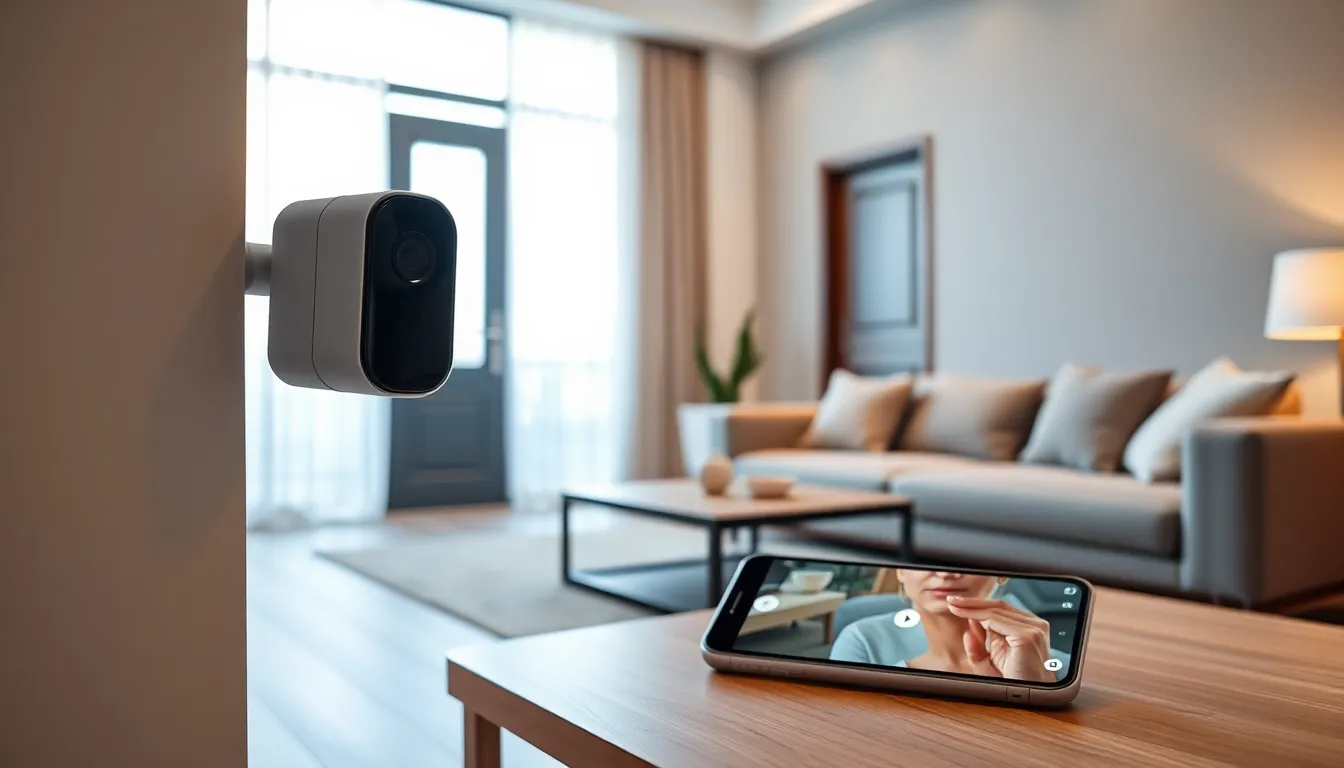Imagine opening your door to find a friendly robotic vacuum ready to greet you, all while your security system alerts you to a potential breach, even when you’re a thousand miles away on vacation. The Internet of Things (IoT) transforms the way we think about home security, turning ordinary homes into smart fortresses, complete with quirky gadgets and automated notifications. But does the idea of hooking up all your devices to the internet leave you feeling a bit unplugged? Fear not. Let’s jump into the world of IoT home security, where safety meets innovation, and discover how it can give you peace of mind like never before.
Table of Contents
ToggleUnderstanding IoT In Home Security

The Internet of Things, often abbreviated as IoT, refers to the extensive network of connected devices that communicate over the internet. In home security, this translates to smart devices that enhance safety through enhanced monitoring and automation.
Consider this: traditional security systems rely heavily on sensors and alarms with limited functionality. IoT systems evolve this concept, allowing cameras, alarms, lights, and door locks to interact seamlessly. Imagine receiving a notification on your smartphone when a camera detects movement while you’re at work, or your doorbell camera allowing you to speak with a visitor from anywhere. That’s the power of IoT in home security, a modern twist that caters to today’s fast-paced lifestyle.
The Benefits Of IoT Home Security Systems
Investing in an IoT home security system comes with a plethora of benefits:
- Remote Monitoring: Users can monitor their homes from anywhere, using a smartphone app. This feature is crucial for those constantly on the go.
- Automated Alerts: IoT systems send immediate alerts to homeowners when suspicious activity is detected, no more waiting for a security guard to show up.
- Energy Efficiency: Many IoT security devices also help manage home energy use, such as smart locks that ensure lights are turned off when no one is home.
- Cost Savings: With a comprehensive IoT security system, homeowners can often lower insurance premiums. Insurers typically value homes with advanced security measures.
- Scalability: As technology evolves, IoT systems can be easily upgraded or expanded, allowing homeowners to add new devices or functionalities as needed.
Key Components Of An IoT Home Security System
Every effective IoT home security system comprises several key components:
- Smart Cameras: These connect to the internet and provide real-time video feeds accessible via smartphones. Some offer features like night vision and two-way audio.
- Smart Locks: Forget traditional keys. Smart locks allow for keyless entry through smartphones or security codes. You can even grant temporary access to guests.
- Sensors: Window and door sensors alert homeowners when a breach occurs. Whether it’s the front door swinging open unexpectedly or a window getting smashed, these sensors have you covered.
- Smart Alarms: Alarms can be linked to your smartphone, ensuring you’re immediately notified in case of a breach. Many also have emergency protocols and camera integration for quick responses.
- Smart Lights: Link smart lights to your security system. Activate lights remotely or set them to simulate occupancy, tricking potential intruders.
Challenges And Considerations
Even though the impressive benefits, implementing an IoT home security system comes with its own set of challenges:
- Cybersecurity Risks: With everything connected to the internet, homes become more vulnerable to hacking. Strong passwords, regular updates, and robust security measures are crucial to mitigating these risks.
- Technical Complexity: Setting up and managing IoT devices can be a challenging job for some. It’s important to ensure all devices are compatible and that installation doesn’t overly complicate daily routines.
- Cost Considerations: While many IoT security devices are wallet-friendly, the initial setup cost can be higher than traditional security systems. Consider the long-term savings and benefits before diving in.
- Power Dependency: IoT devices often rely on power and internet connections. In cases of outages, systems can fail, so having backup power options is a smart practice.
Best Practices For Implementing IoT Home Security
Successfully implementing an IoT home security system requires a strategic approach:
- Assess Your Needs: Determine what features are crucial for your home. Do you need monitoring during the day? How many cameras will you require?
- Research Devices: Not all devices are created equal. Consider compatibility, user reviews, and the brand’s reputation in the market.
- Secure Your Network: Fortify your Wi-Fi with strong passwords, enable WPA3 encryption, and regularly update your router’s firmware.
- Consider Professional Installation: If the setup seems overwhelming, hiring professionals can ensure everything is correctly installed and integrated.
- Regular Maintenance: Keep firmware and software up to date. Regularly check devices to ensure they are functioning correctly.
- Engage with Your System: Regular notifications and alerts mean keeping an eye on your system can enhance its efficacy.
Future Trends In IoT Home Security
The world of IoT home security is ever-evolving, hinting at exciting trends on the horizon:
- Integration with AI: Expect to see further integration of AI for smarter threat detection and predictive analytics that can perceive potential security threats before they happen.
- Increased Automation: Homeowners will see enhanced automation features where systems learn daily routines and adjust security settings proactively.
- Smart Home Ecosystems: Devices will become more connected beyond security, integrating with home entertainment systems, thermostats, and appliances, creating a truly smart home environment.
- Sustainability Focus: Future devices will likely prioritize sustainability, using less energy and incorporating eco-friendly materials while maintaining performance.





